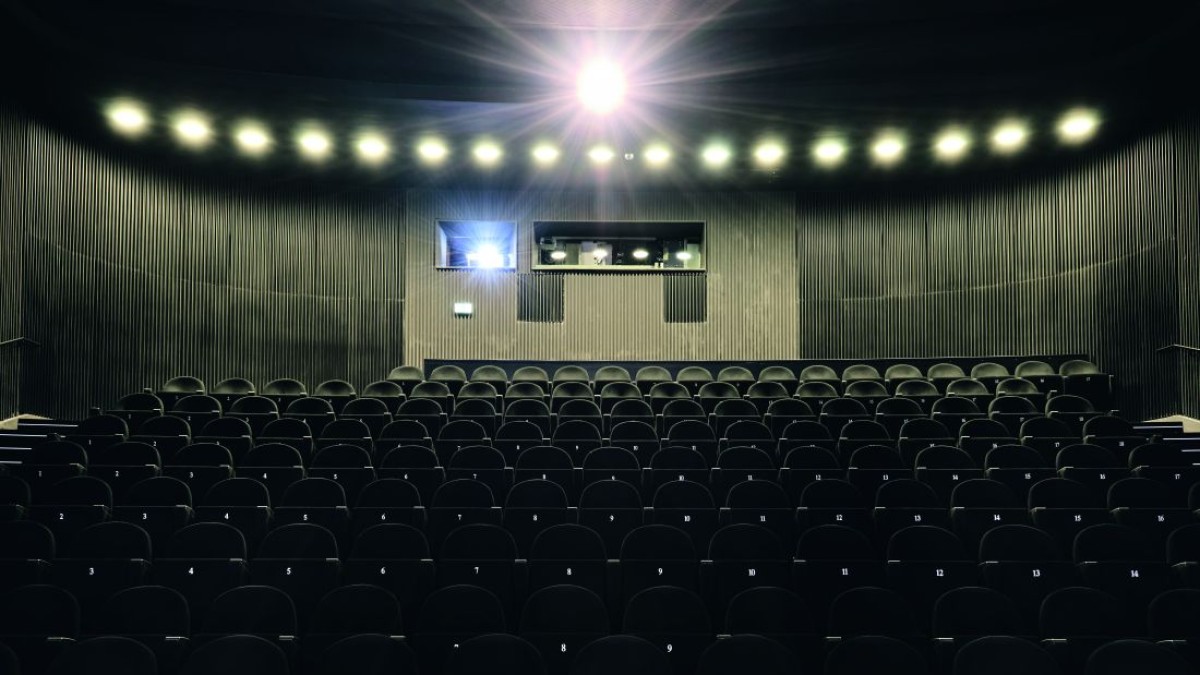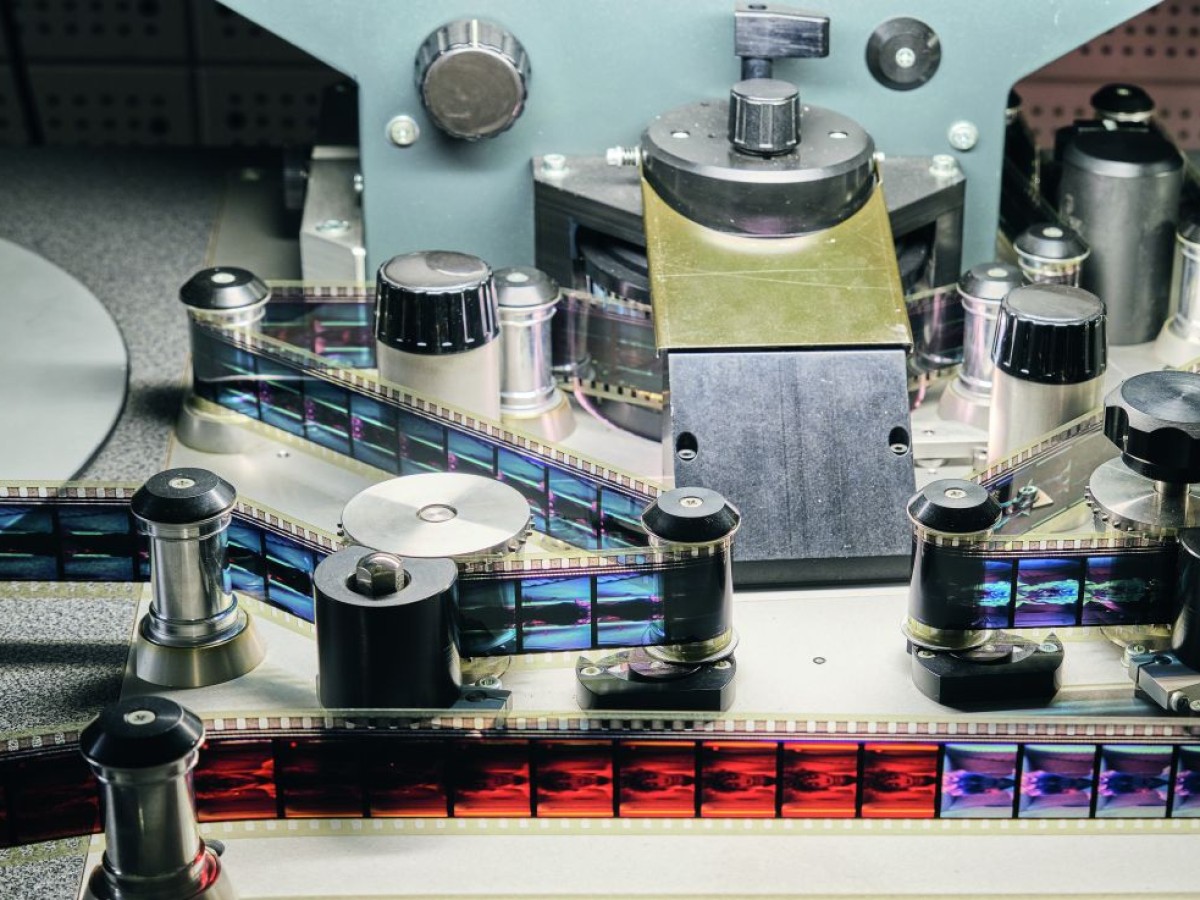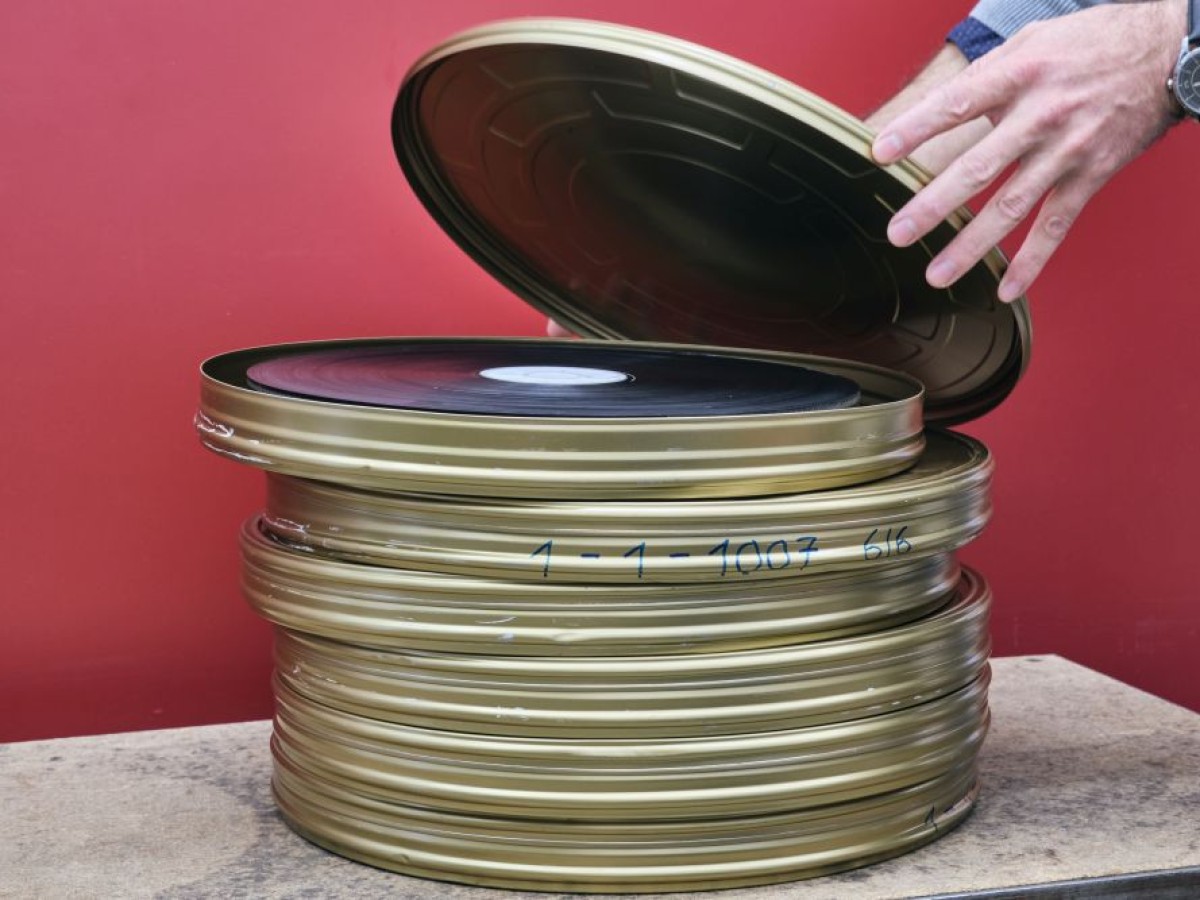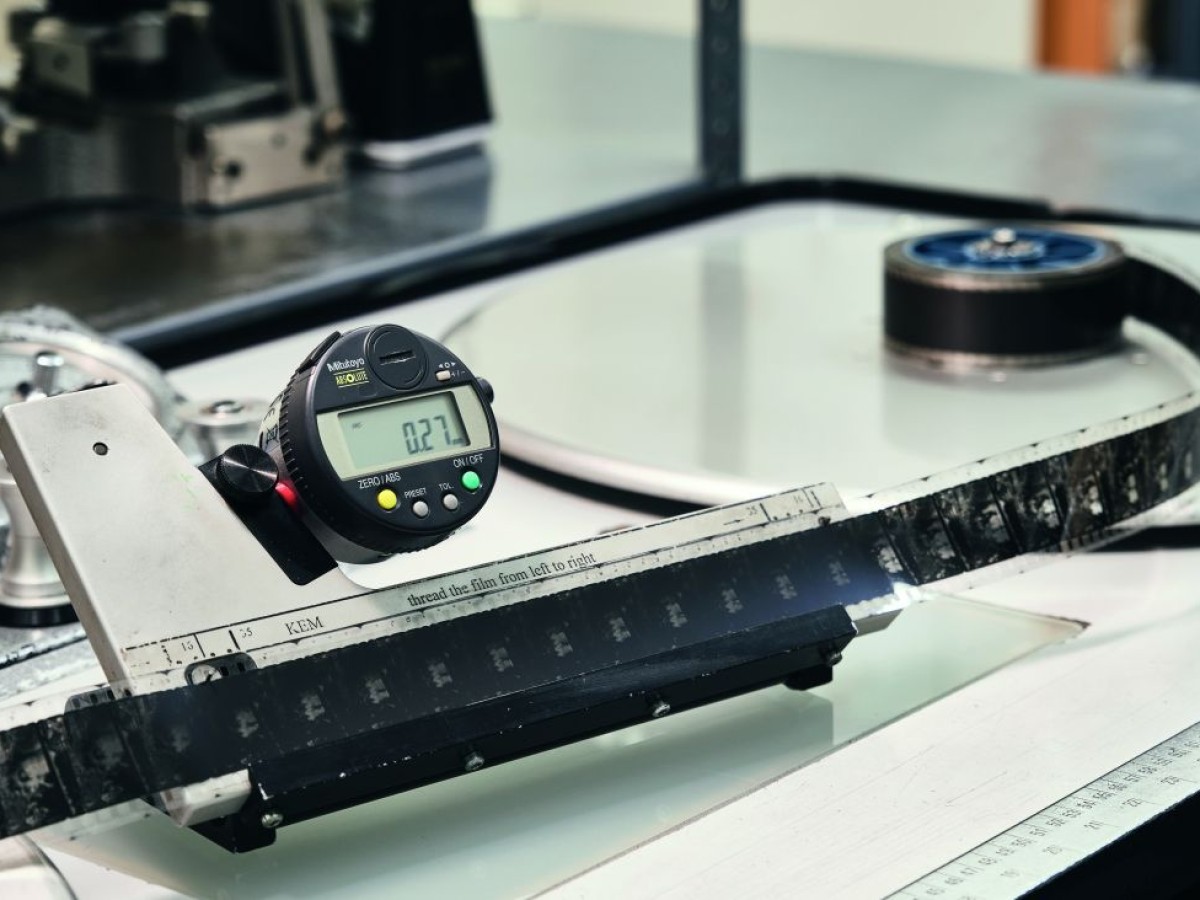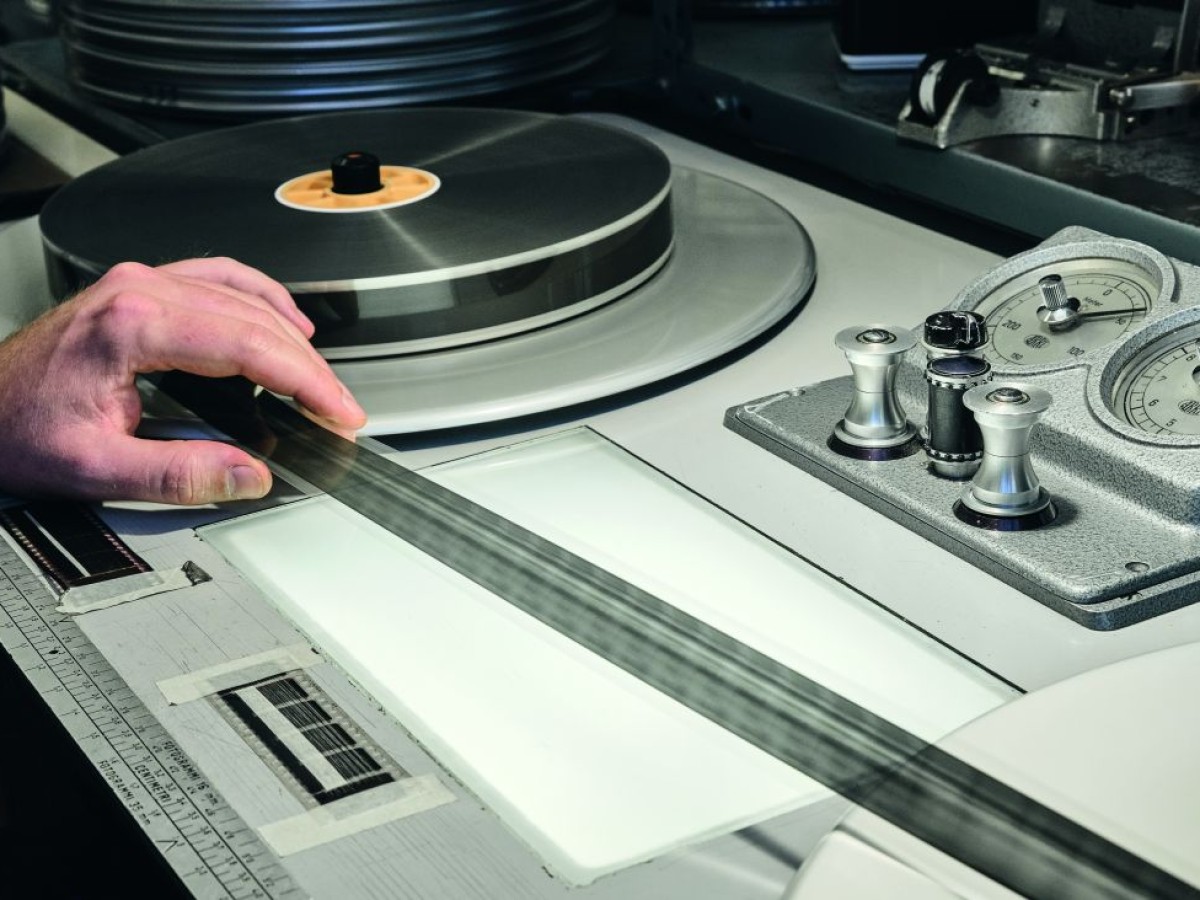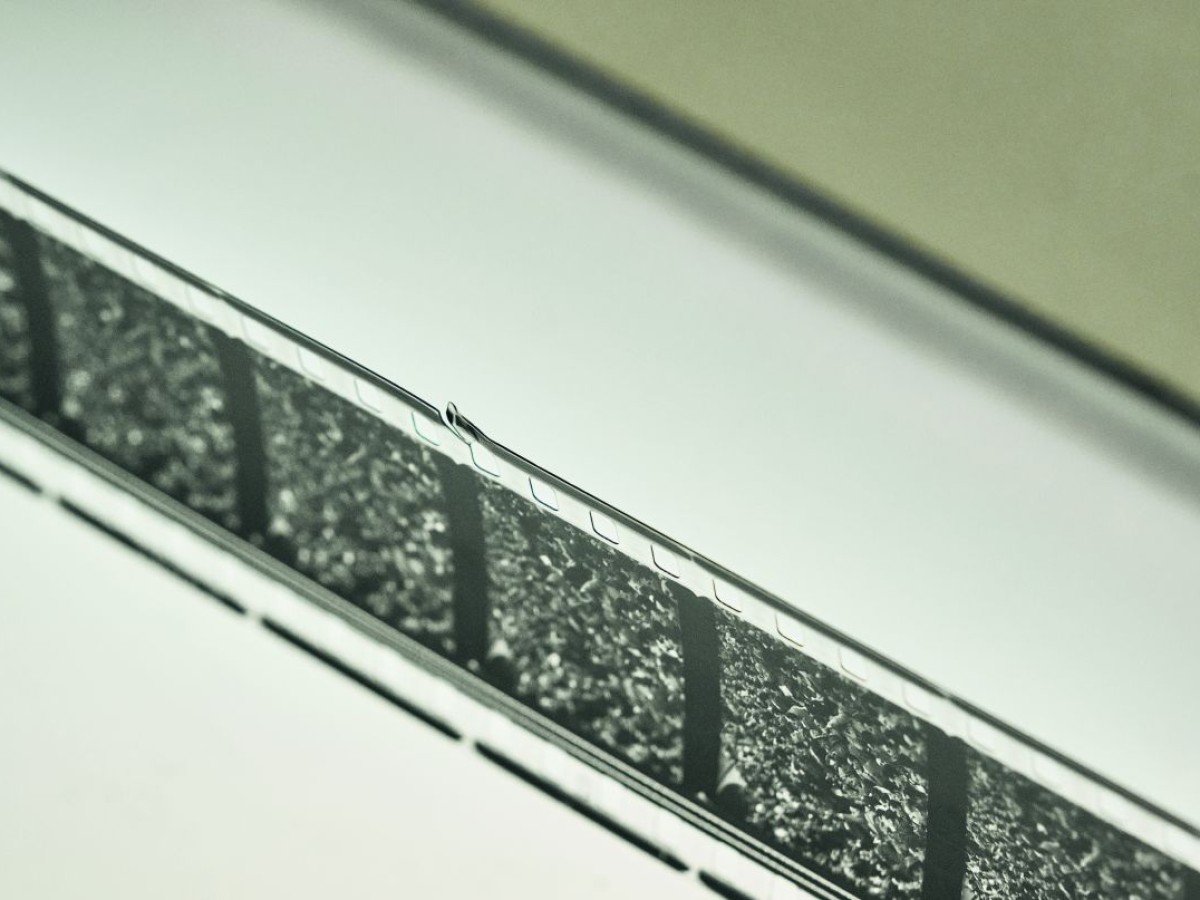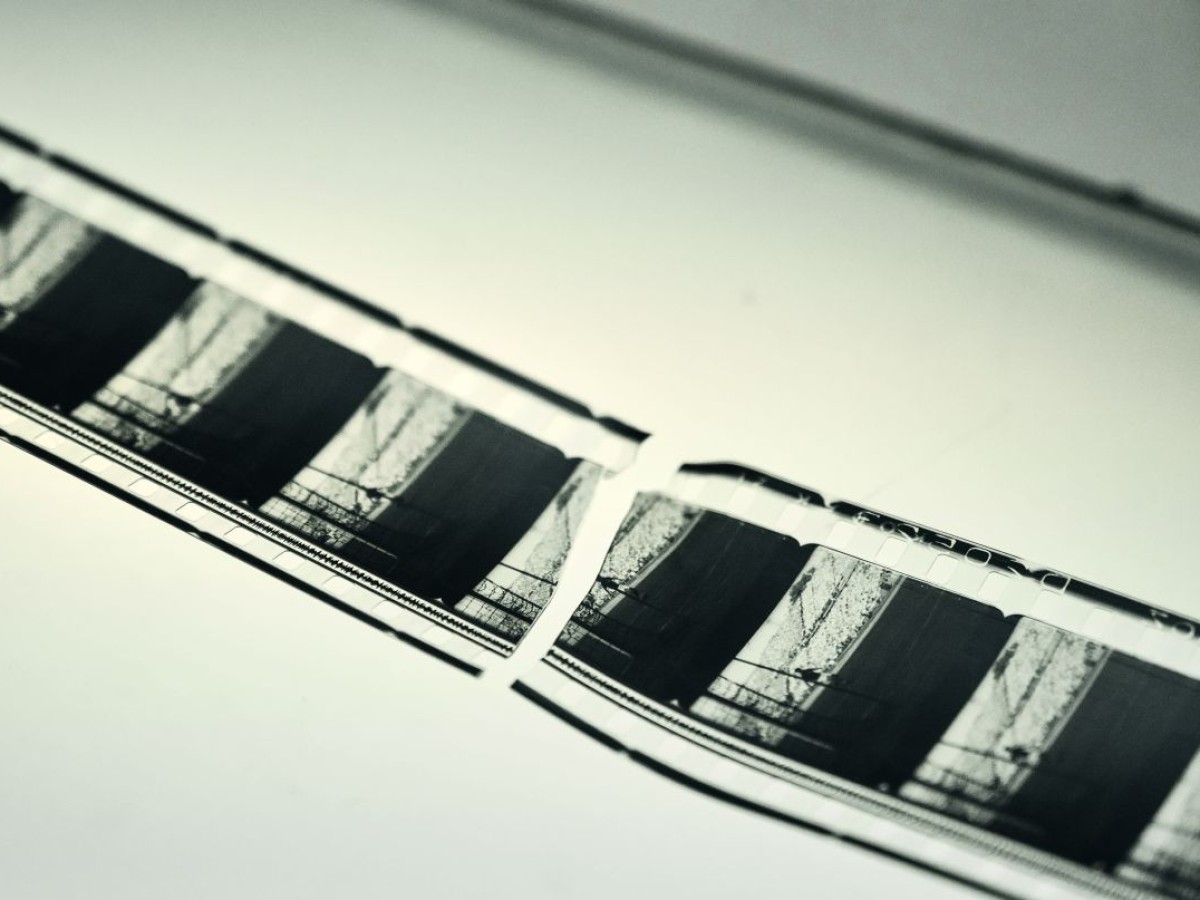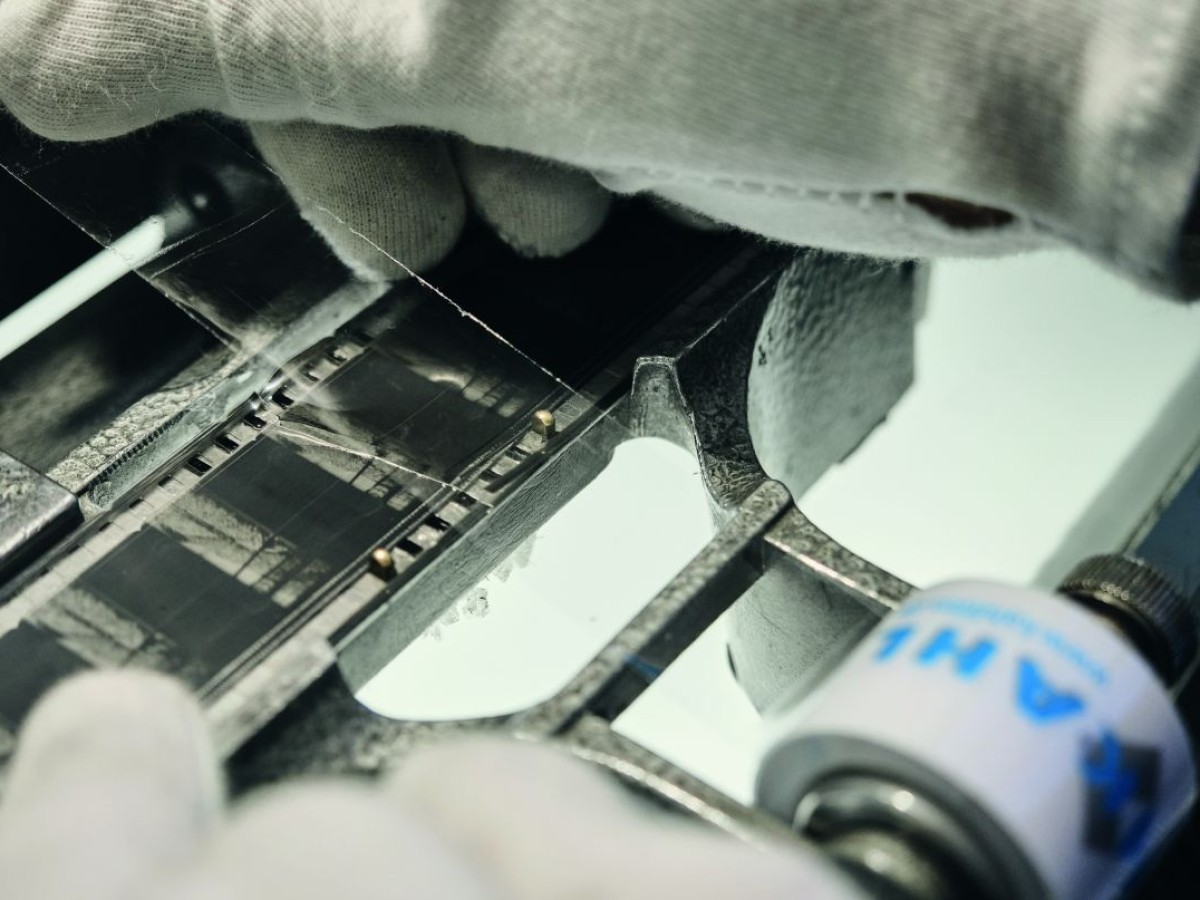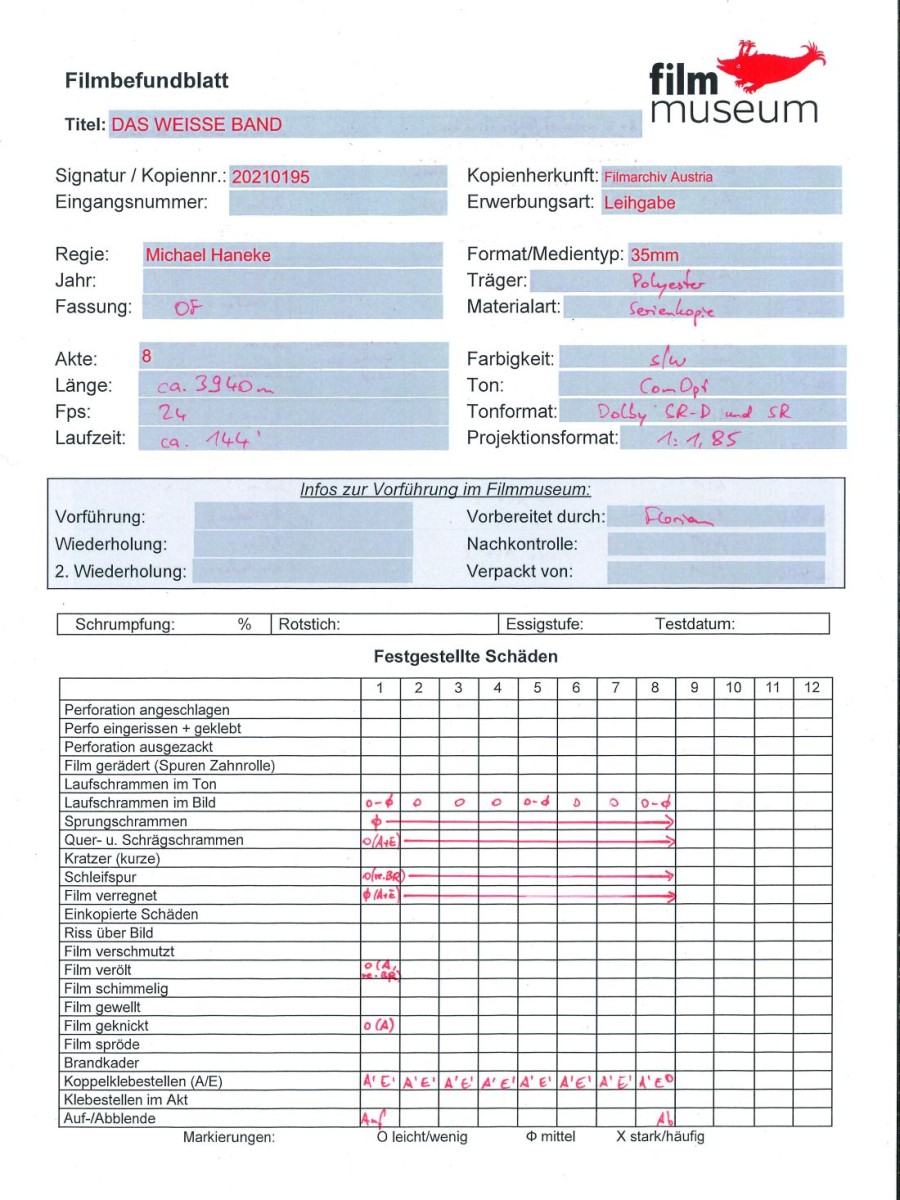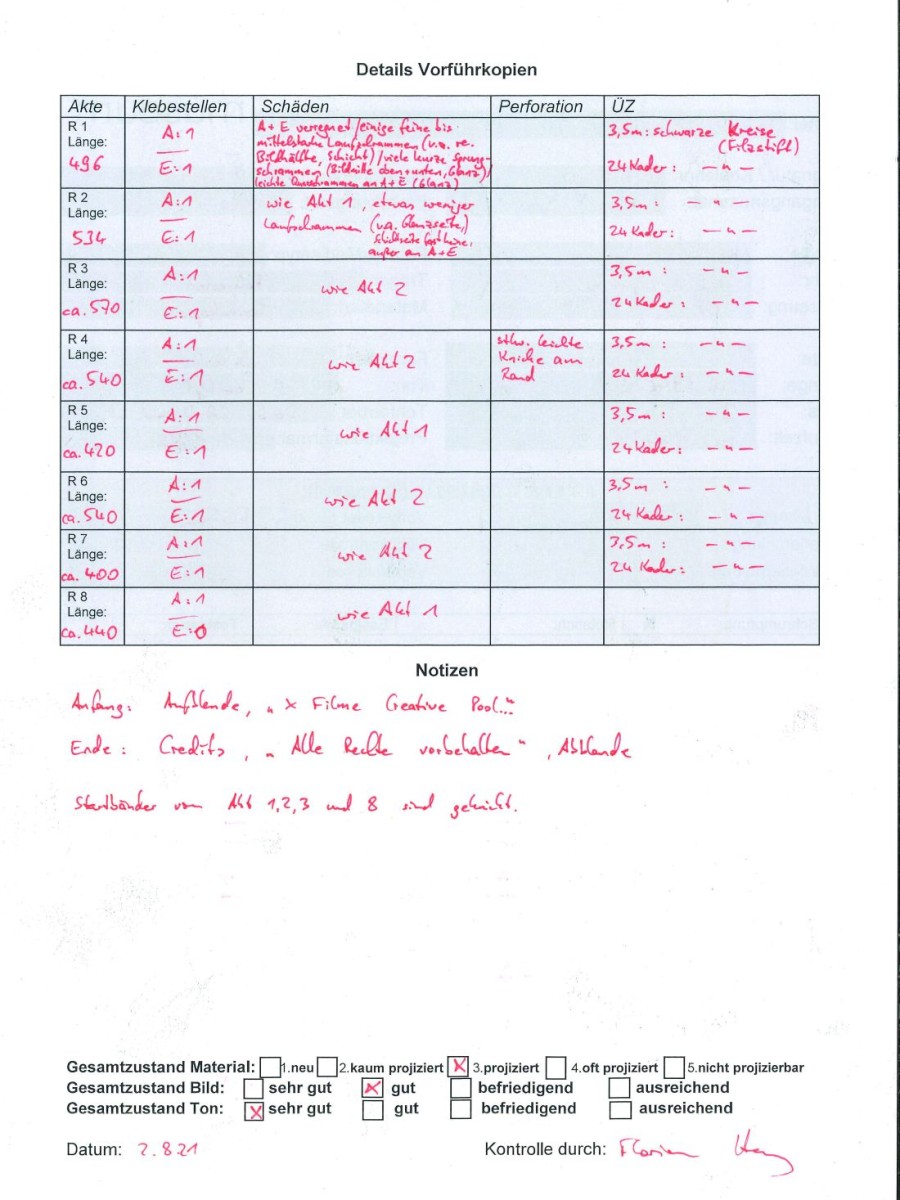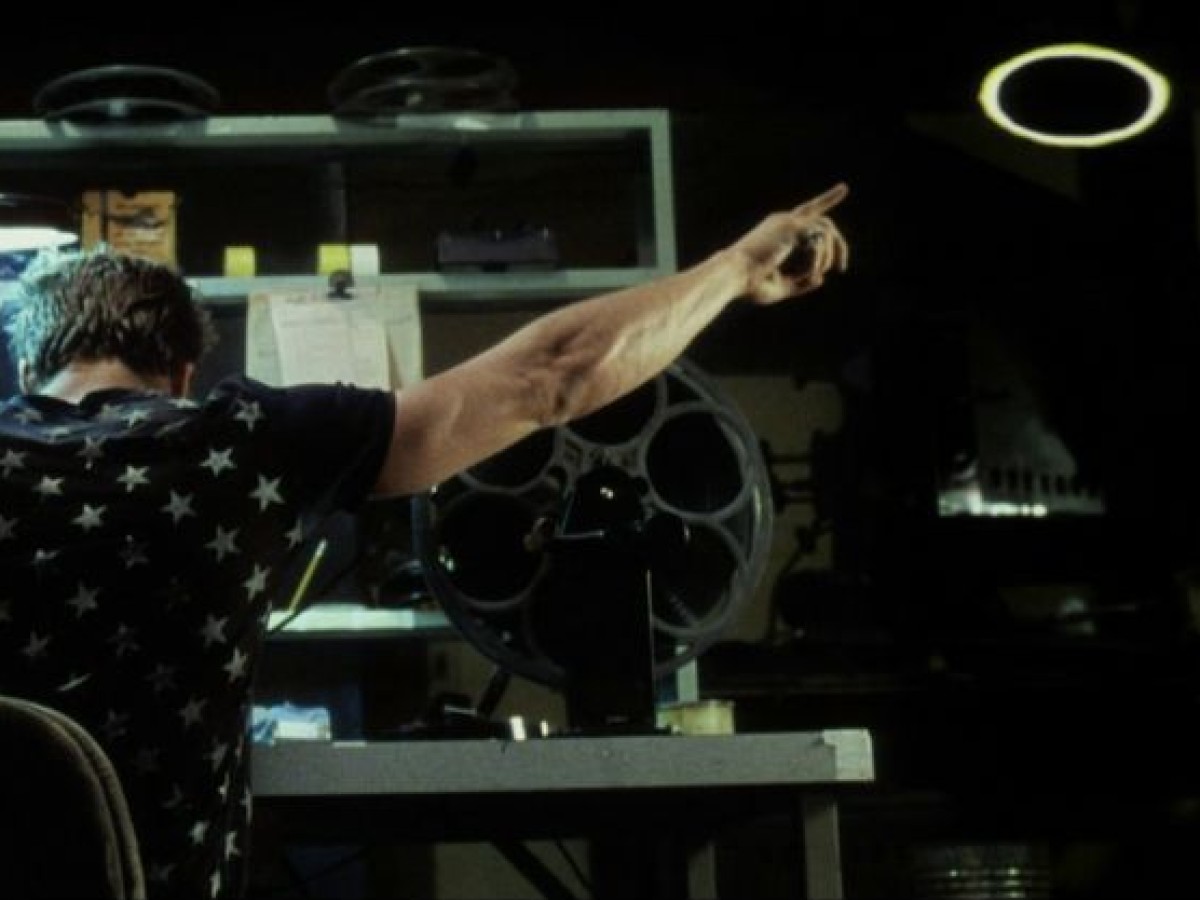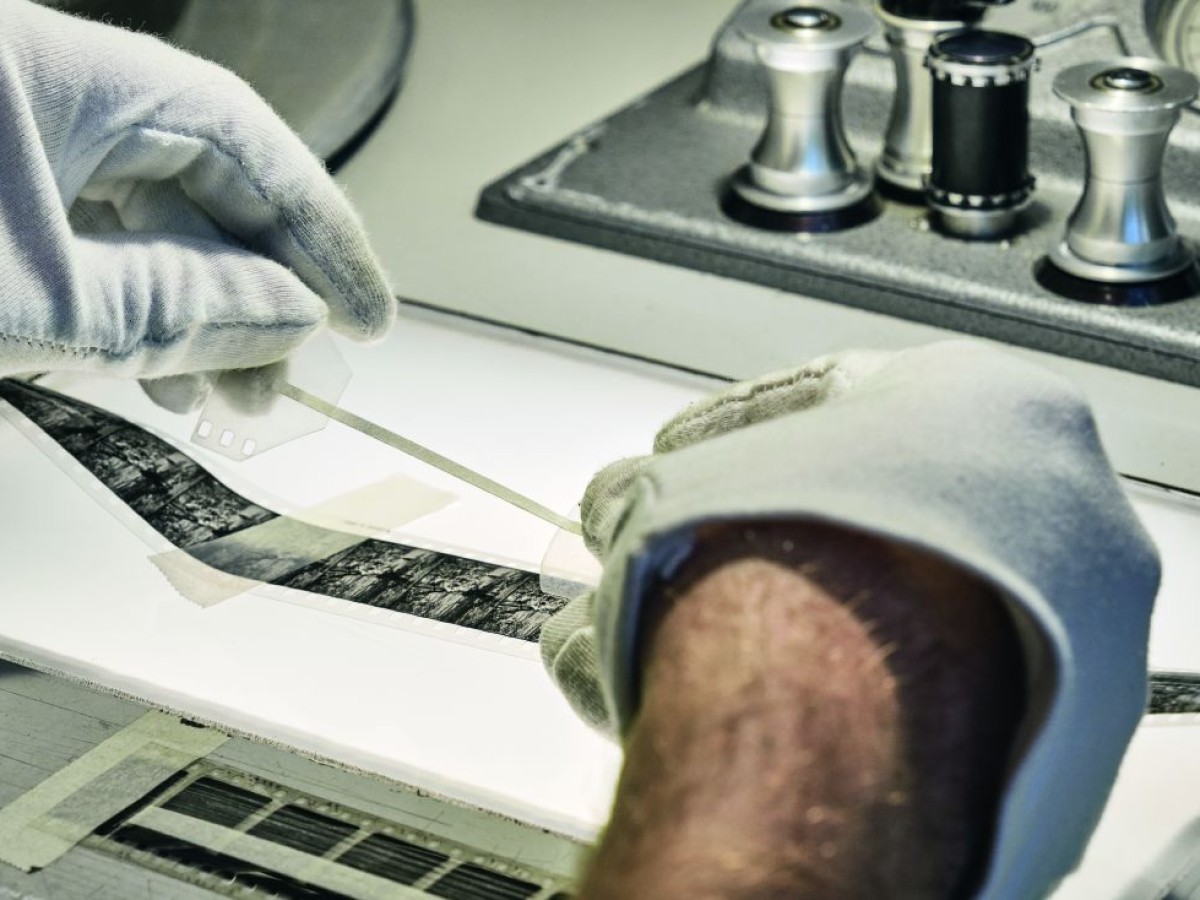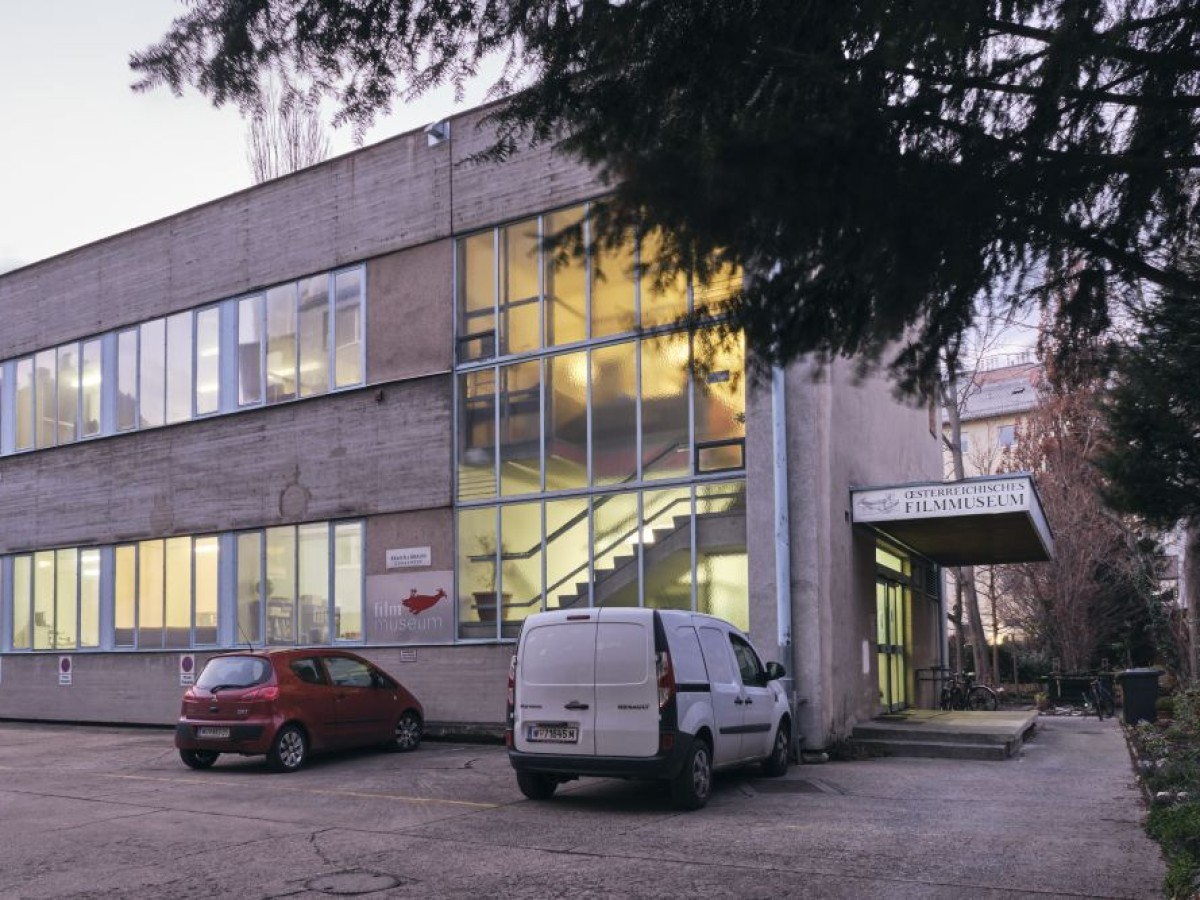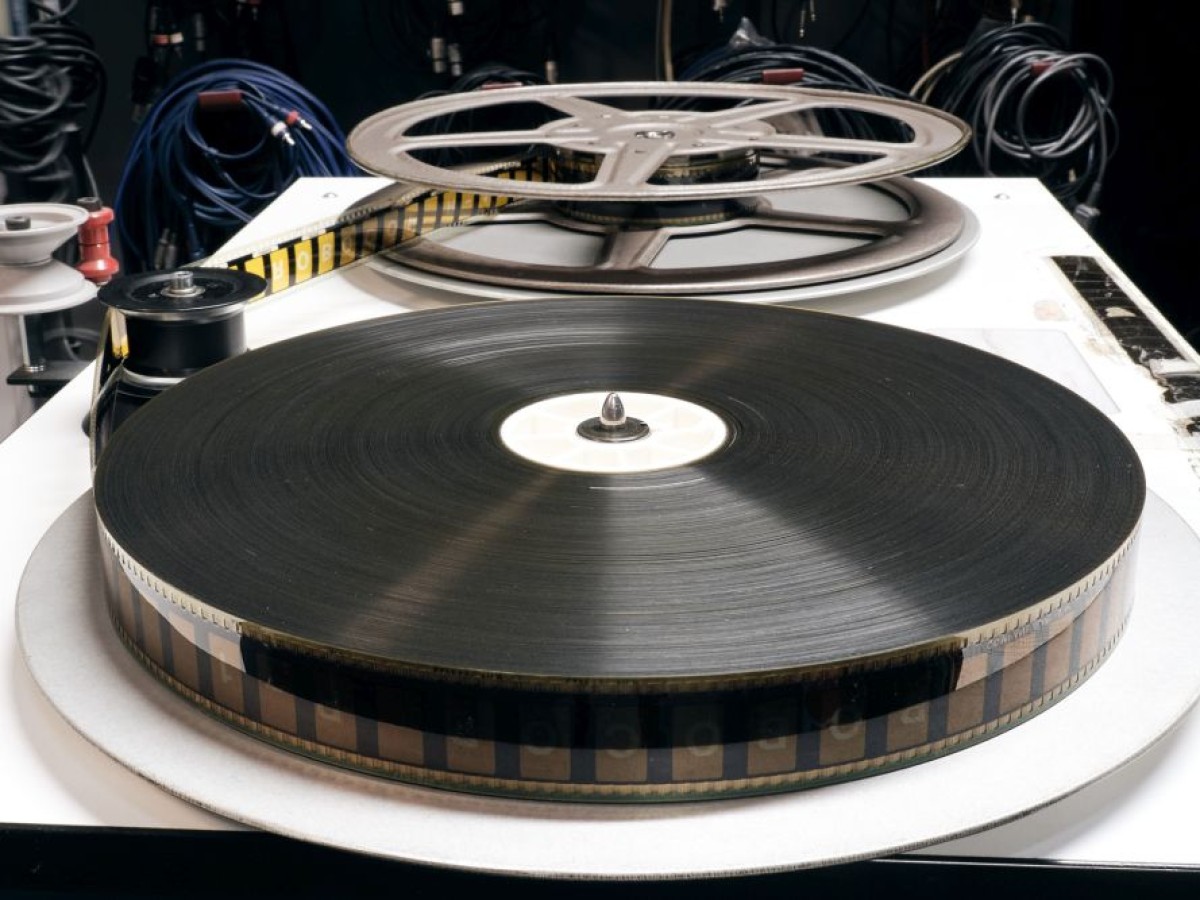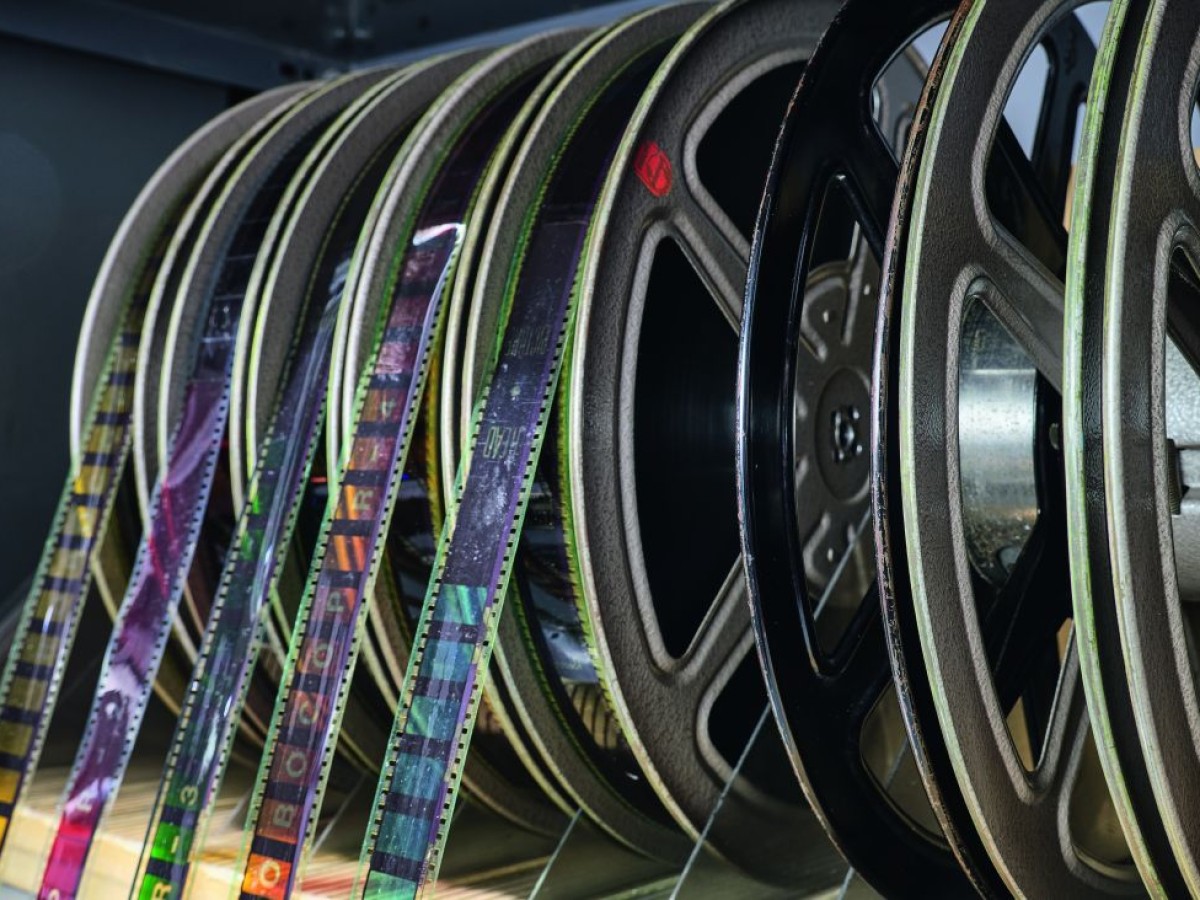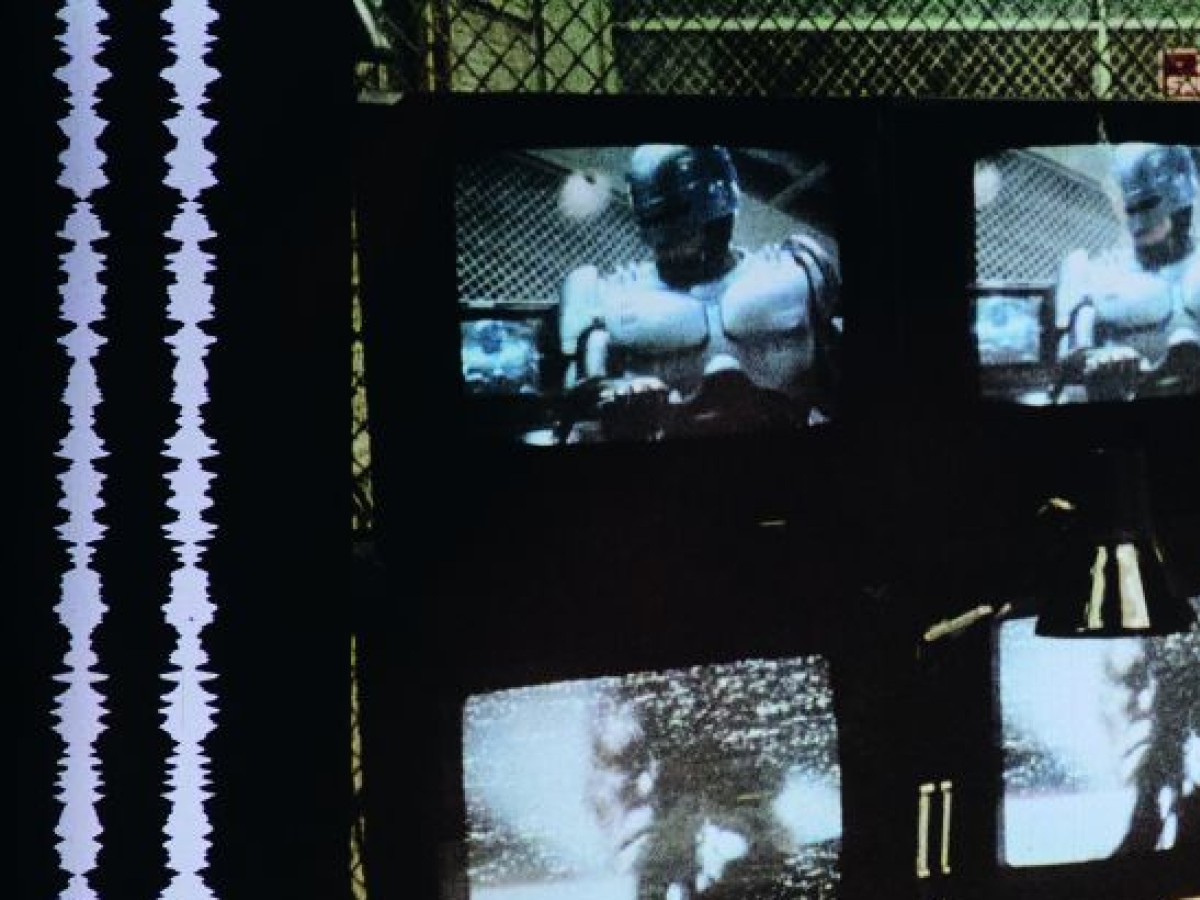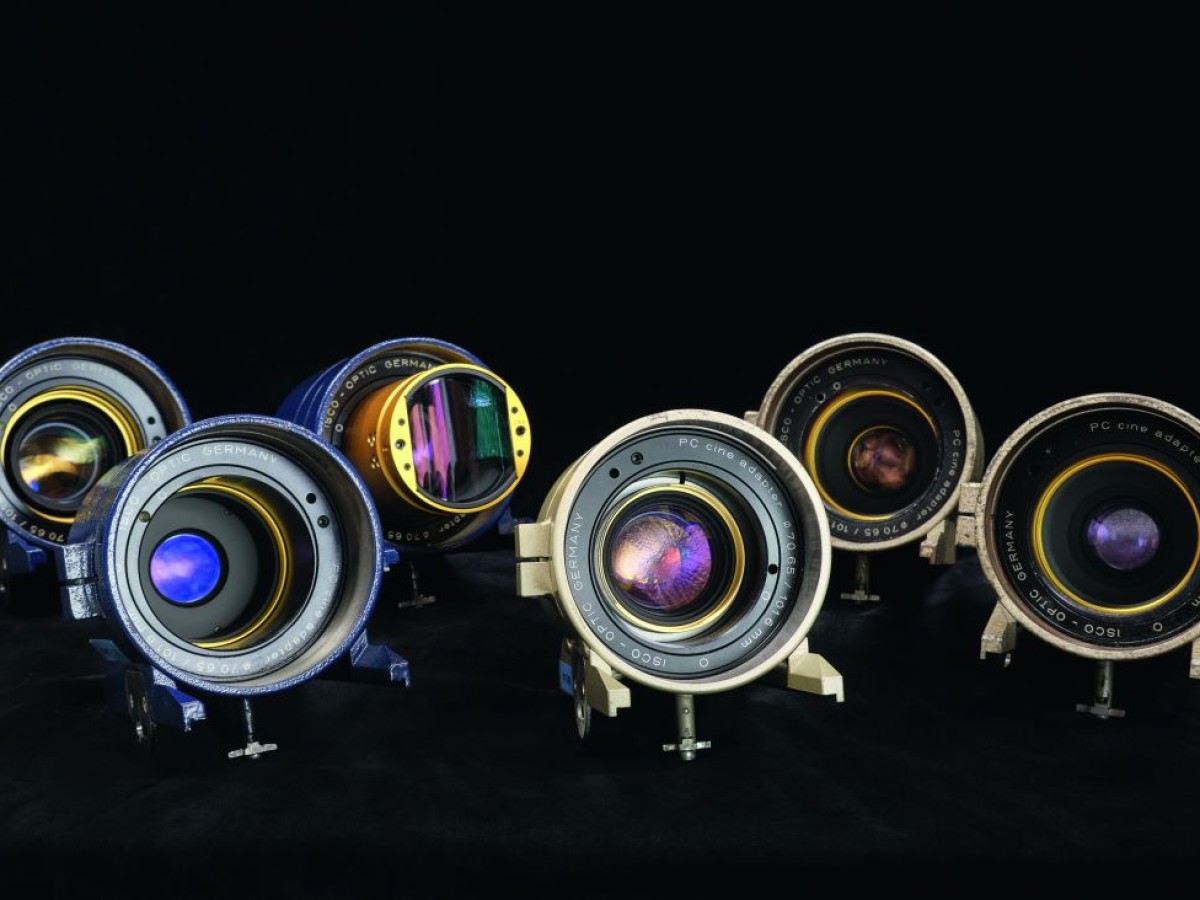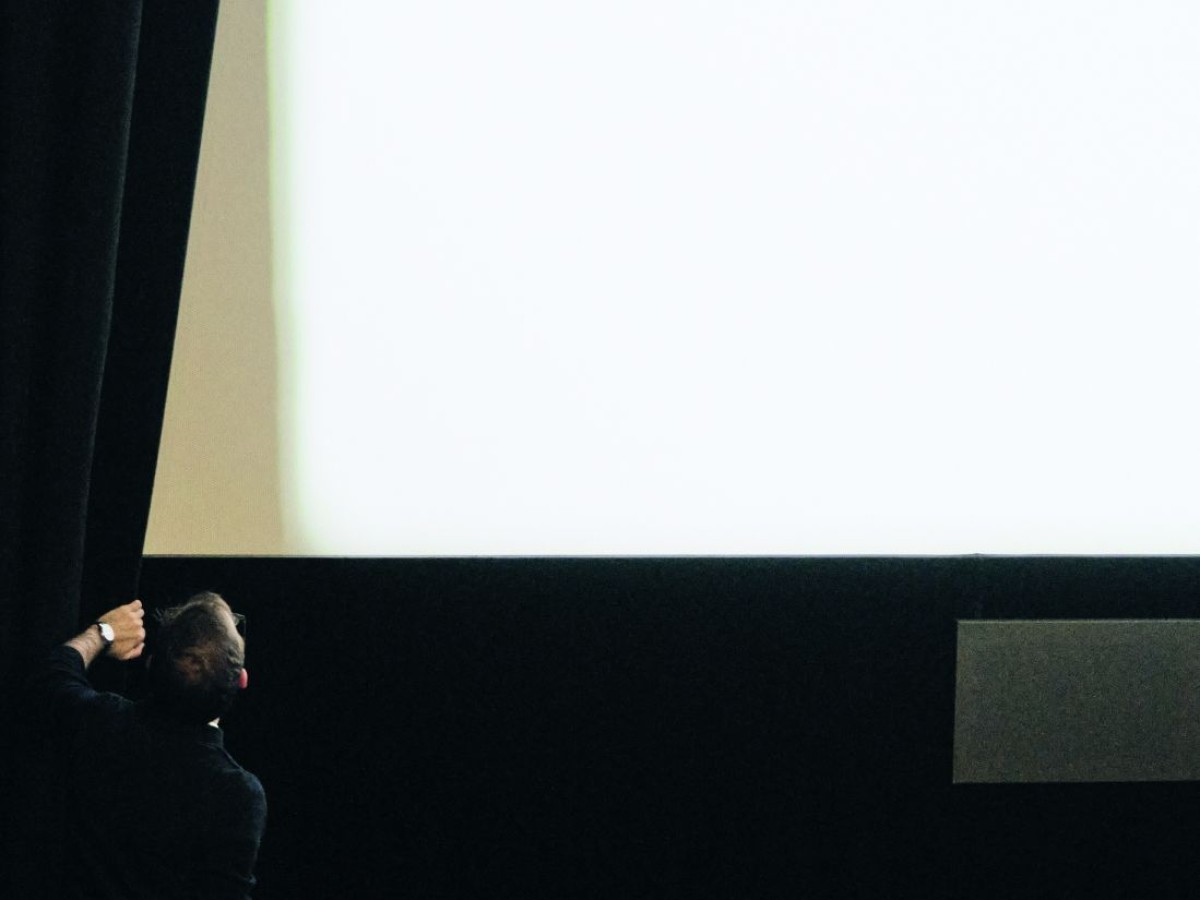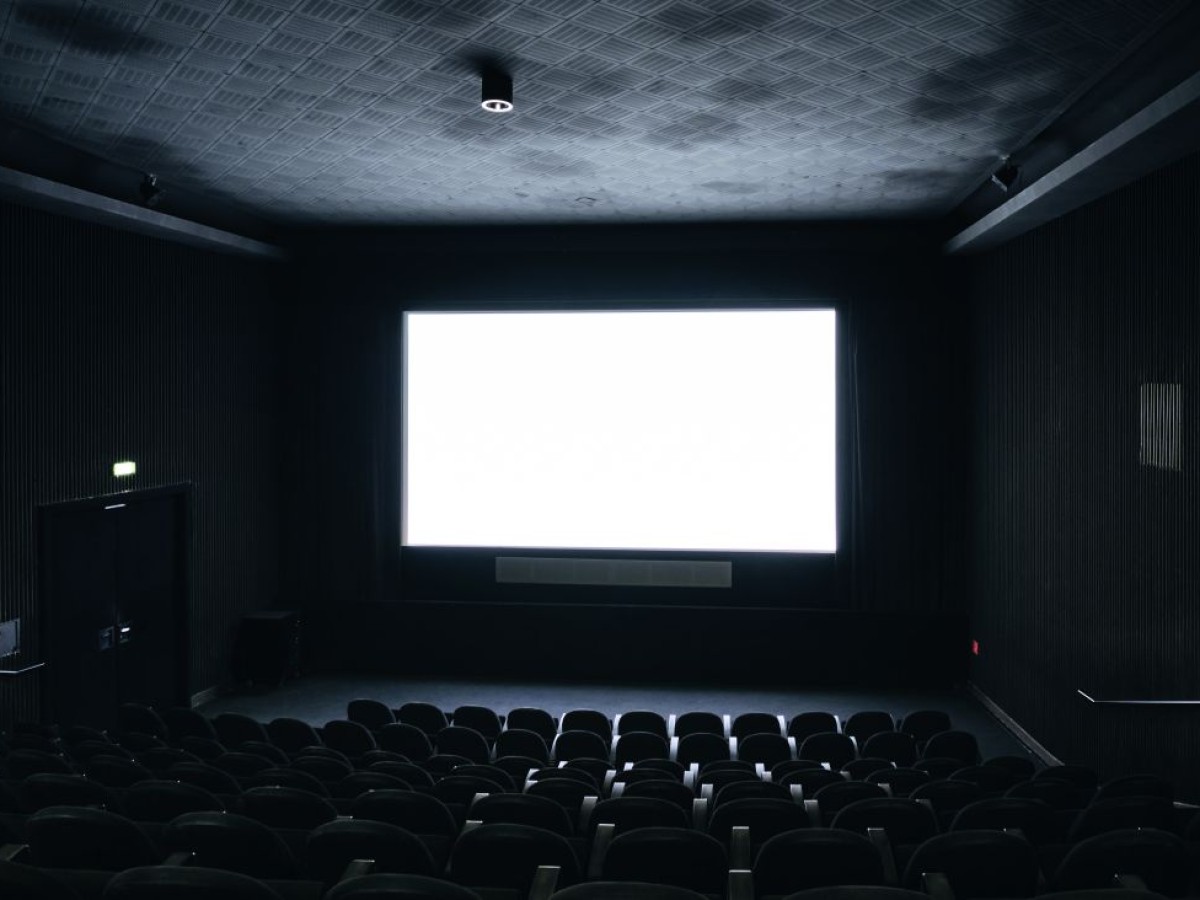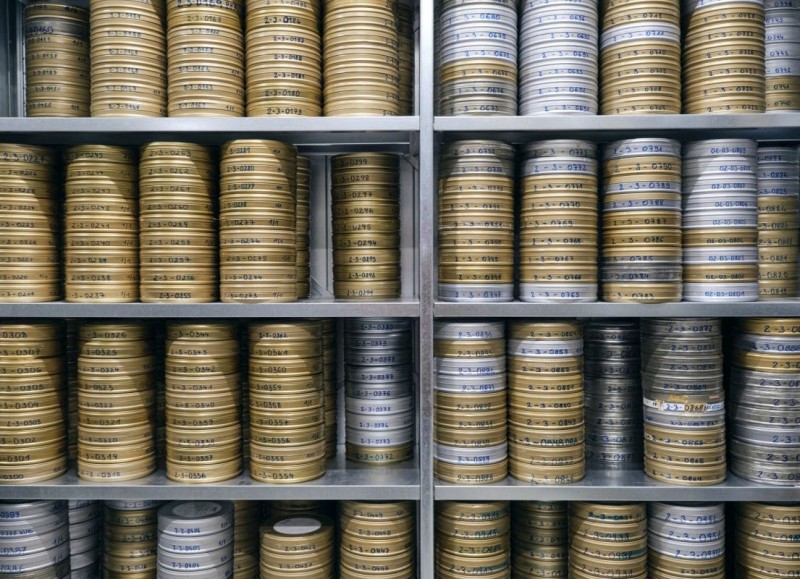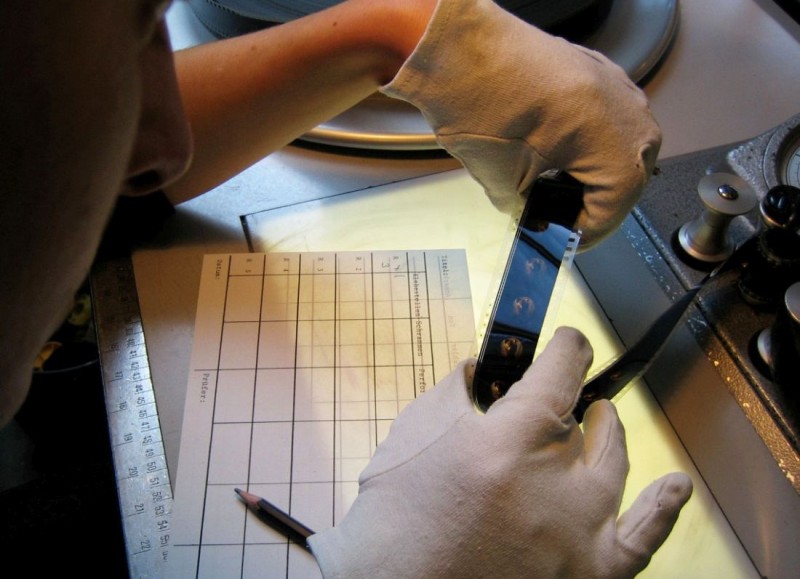On display from February 28, 2022 to March 20, 2023
Peep Show #3
How an Exhibition Makes It Onto the Screen
Photos: Eszter Kondor Text: Kevin Lutz Translation: Ted Fendt Design: Gabi Adébisi-Schuster
The Austrian Film Museum is committed to showing works of film history primarily in their original formats and in the best-available prints. Regardless of whether the prints come from our own collection or other international cinematheques and archives, a lot of preparation work is necessary before the films appear on the screen.
A single reel of 35mm sound film generally has a running time of 15 to 20 minutes. This means that a feature film can quickly add up to six large reels. An entire film print can weigh around 25kg or more.
Before being projected, each reel must be closely examined. This involves a basic check of the language version and the print's completeness as well as a very detailed inspection, including identifying damage, color shifts, and the degree to which the print may have shrunk.
Film stock that was manufactured at certain times can fade and often red is the only color remaining. In such cases, we may no longer consider a print fit for projection in the Film Museum.
Before being projected, each reel must be closely examined. This involves a basic check of the language version and the print's completeness as well as a very detailed inspection, including identifying damage, color shifts, and the degree to which the print may have shrunk.
Film stock that was manufactured at certain times can fade and often red is the only color remaining. In such cases, we may no longer consider a print fit for projection in the Film Museum.
Most films produced in the 1990s were printed on cellulose acetate stock, which is known to degrade. One sign of this degradation is shrinkage. If the print shrinks beyond a certain point, it can no longer be safely run through a projector because it may cause damage to the perforations, which transport the film.
Film stock is fragile and can tear under certain amounts of stress. This is another reason it must be closely inspected. Even the smallest tears on the edges of a print can lead to a major tear in projection and interrupt a screening. To prevent this, an archivist runs the entire film between their fingers, carefully looking for tears and precisely repairing them.
Film stock is fragile and can tear under certain amounts of stress. This is another reason it must be closely inspected. Even the smallest tears on the edges of a print can lead to a major tear in projection and interrupt a screening. To prevent this, an archivist runs the entire film between their fingers, carefully looking for tears and precisely repairing them.
Every bit of damage – from existing tears down to the smallest scratches – are noted with as much detail as possible on a film inspection sheet. This sheet also contains the most important information for the screening: projection speed, aspect ratio, and sound format.
Sometimes, multiple prints of the same film are available. In such cases, it is important to determine which one looks best and is in the best condition. Differences can be obvious, such as damage like scratches or other marks, but they can also be more subtle: weaker or stronger details, contrast, and color balance. Identifying the best print for the best-looking screening often requires a pair of sharp eyes and the entirety of an archivist's experience.
Sometimes, multiple prints of the same film are available. In such cases, it is important to determine which one looks best and is in the best condition. Differences can be obvious, such as damage like scratches or other marks, but they can also be more subtle: weaker or stronger details, contrast, and color balance. Identifying the best print for the best-looking screening often requires a pair of sharp eyes and the entirety of an archivist's experience.
Since films consist of multiple reels shown alternately on two projectors, it is important to identify and describe so-called "changeover cues" so the projectionist knows when to change from one reel to the next. Changeover cues can be hole punched, drawn, or printed in and can have different colors and shapes. They are usually found on the upper right corner of the image and appear on four consecutive frames on precisely determined points at the end of the reels.
If changeover cues are missing, small, removeable strips of tape are added during inspection that leave no mark on the print and serve the same purpose.
If changeover cues are missing, small, removeable strips of tape are added during inspection that leave no mark on the print and serve the same purpose.
The archive where these preparations occur is in Vienna's 19th district. About one-fourth of the museum's staff work here with and on the film collection, which includes inspecting the content and condition of films for cataloguing and conservation, distribution and digitization, restoration, and assisting researchers, filmmakers, and fellow cinematheques.
Monday through Friday, the museum's driver drives back and forth between the archive and the cinema in the center of the city to deliver films for the evening screenings.
Monday through Friday, the museum's driver drives back and forth between the archive and the cinema in the center of the city to deliver films for the evening screenings.
After this preparation work, it falls to the evening staff – projectionists and cinema managers – to take the film print and information on the inspection sheet and provide the audience with the best possible projection. The projectionist rewinds each of the reels from its plastic core onto projection reels. Following the information on the inspection sheet, the projectionist chooses the correct lens and selects the proper sound format on the sound processor. An aperture plate in the projector's gate prevents the soundtrack and unwanted parts of the image from appearing onscreen. Masking set by the manager as precisely as possible covers up any resulting shadows and gives the picture sharp edges.
After a short test projection on both machines during which the manager adjusts the film's approximate volume, the projectionist rewinds the film and threads the projectors for the actual screening. Now everything is ready for the audience and the screening can begin.
The day after the screening, the print returns to the archive where it is again inspected for possible new damage and added changeover cues are removed residue-free. If there are no additional screenings, the print is brought back to its location in the vault or returned to its lender. Meanwhile, the archivists prepare the films for the following days for one of the more than 600 screenings a year.
The day after the screening, the print returns to the archive where it is again inspected for possible new damage and added changeover cues are removed residue-free. If there are no additional screenings, the print is brought back to its location in the vault or returned to its lender. Meanwhile, the archivists prepare the films for the following days for one of the more than 600 screenings a year.
Film Print Inspection: Florian Haag, Vanessa Scharrer Driver: Robert Czapla Projection: Franz Kaser-Kayer (Head), Mirjam Bromundt, Florian Kläger, Markus Maicher, Jan Pirker, Reinhard Sockel, Markus Zöchling Cinema Management: Mirjam Bromundt, Helmut Erber, Georg Grigoriadis, Adrian Lindenthal, Reinhard Sockel, Pia Wurzer (as of February 2022)
Exhibition View


